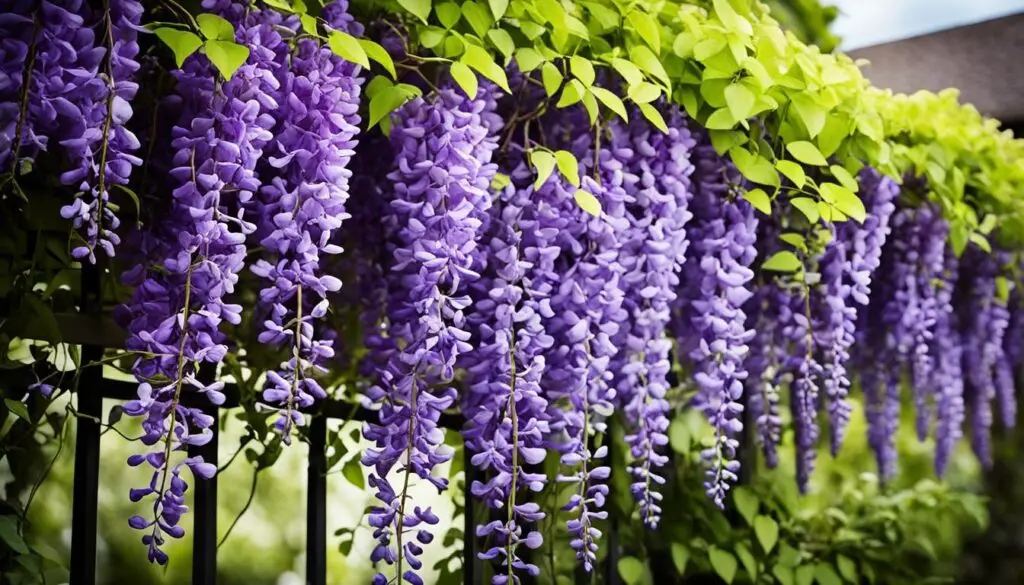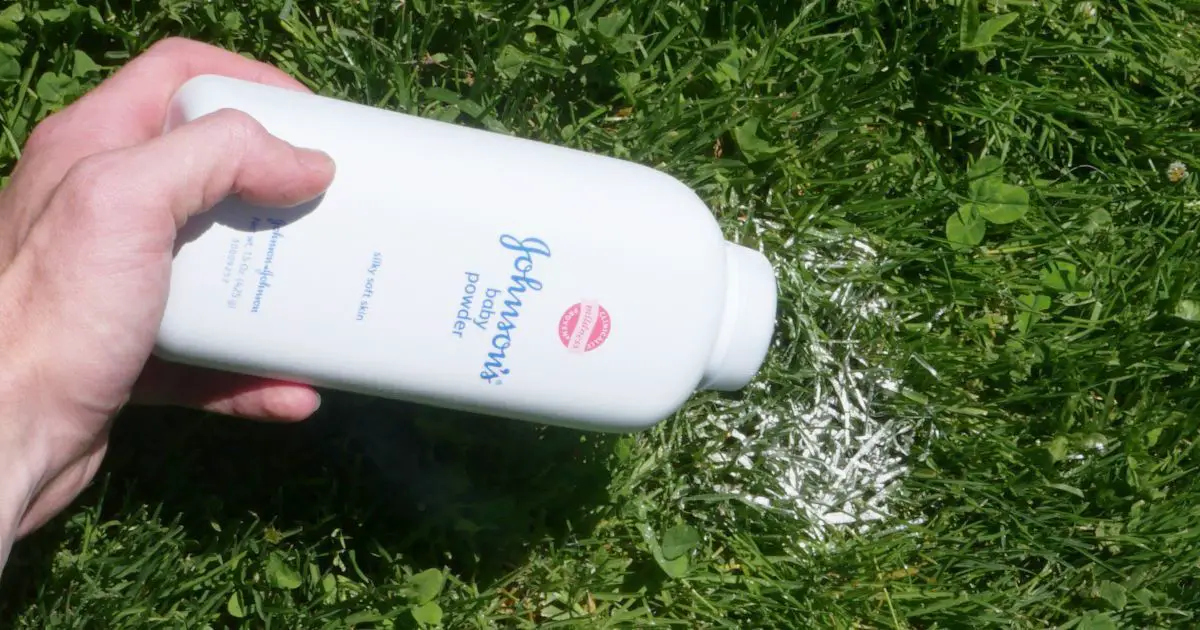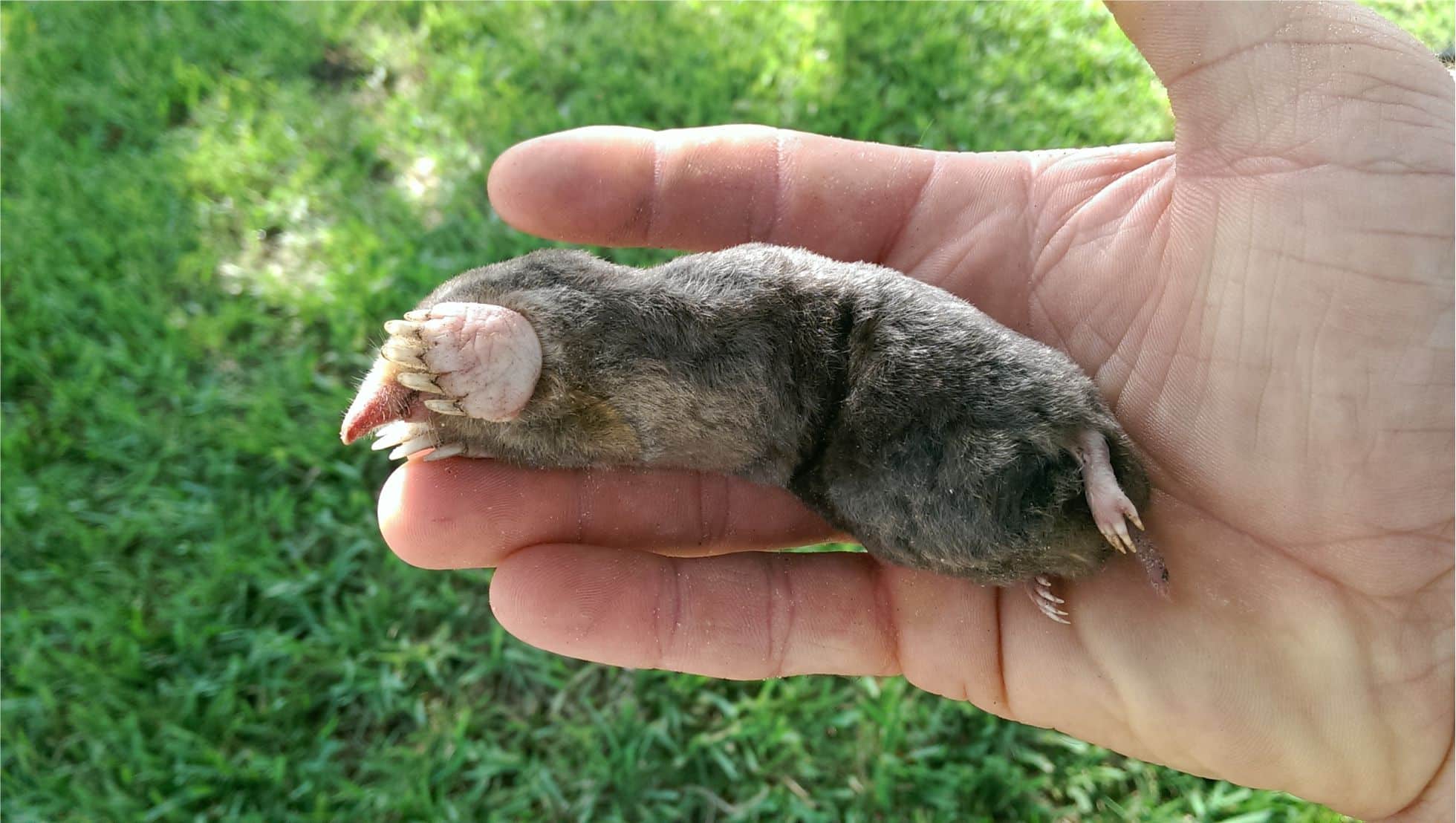I’m excited to share my knowledge on growing the beautiful wisteria vine. This plant brings magic to any outdoor area, from gardens to patios.
In this guide, I’ll show you how to grow and care for a wisteria plant. This way, it will bloom beautifully every year.
Wisteria is a flexible vine that fits many growing conditions. With the right care, it can really shine. This article is for both new and experienced gardeners.
It covers everything from picking the best spot and soil to pruning and spreading the plant. We’ll help you grow and care for your wisteria successfully.

Key Takeaways
- Wisteria is a beautiful, fragrant vine that requires regular care and maintenance to prevent it from becoming invasive.
- Selecting the right location and soil type is crucial for wisteria’s growth and development.
- Proper pruning techniques, including twice-yearly trimming, are essential to keep the vine manageable and encourage abundant blooms.
- Propagating wisteria through cuttings or layering can be a rewarding process, though it may take several years for the plant to flower.
- Wisteria is known for its fast and aggressive growth, so a sturdy support structure is a must to prevent damage to the plant or surrounding structures.
Growing Wisteria & Wisteria Vine Care
Wisteria is a beautiful twining vine that needs strong support and regular pruning. It does best in an open area with lawns that are easy to mow.
This plant loves full sun and needs about 6 to 8 hours of sunlight each day for the best growth.
Location and Sunlight Requirements
Wisteria doesn’t do well in cold areas, so pick a spot with plenty of Wisteria sunlight. It can grow in many hardiness zones, from Zone 4 (-20°F) to Zone 9. This makes it a good choice for many places.
Soil and Watering Needs
This plant likes deep, rich soil that’s a bit moist but drains well. It can handle different soil types, making it easy for gardeners. You should water it once or twice a week, especially in hot weather or if it’s in a pot.
Once it’s grown, Wisteria can handle drought, so it doesn’t need much water. But, keep the soil moist during the growing season to keep the vine healthy and strong.
“Wisteria is a captivating twining vine that requires sturdy support and regular pruning to keep it under control.”
Training and Pruning Wisteria Vines
Wisteria vines are known for their beautiful purple flowers. But, they need the right training and pruning to look good and bloom well.
Learning how they grow and using the right methods can help you control this strong plant. This way, you’ll get more flowers.
Twining Characteristics and Training Methods
Wisteria vines have special twining patterns, depending on the type. Chinese wisteria twines to the right, while Japanese wisteria twines to the left.
When training a Wisteria Vine Training, pick a main stem and tie it to a support like an arbor. Cut off any side shoots to let the main vine grow up.
When and How to Prune Wisteria
Pruning your wisteria regularly is key to keeping it looking good and blooming well. Cut back new shoots in July or August to keep the plant the right size and promote flowers.
In late fall or winter, remove dead wood and any branches that cross or are too close together. The right time to prune depends on the wisteria type, with some needing more pruning than others.
| Wisteria Variety | Twining Direction | Pruning Frequency |
|---|---|---|
| Chinese Wisteria (Wisteria sinensis) | Counterclockwise | Twice a year |
| Japanese Wisteria (Wisteria floribunda) | Clockwise | Twice a year |
By knowing how Wisteria vines grow and pruning them regularly, you can have a beautiful display. This will make your garden look great for many years.

Propagating and Growing Wisteria
I love sharing tips on growing wisteria. This beautiful vine can be grown from cuttings or layering. But, growing from seed is not advised. It can take 10-15 years or more to see flowers.
Propagating Wisteria from Cuttings and Layering
To grow wisteria from cuttings, take softwood cuttings in summer, about 3 to 6 inches long. Make sure they have at least two sets of leaves. Then, put the cuttings in moist vermiculite, sand, or a well-drained potting mix.
Keep the cuttings in bright, indirect light and maintain humidity. Wisteria cuttings usually root in 4 to 6 weeks.
Layering is another good way to grow wisteria. Remove a flexible stem, notch it, and bury it in soil. Over the summer, the stem will grow roots. This method helps the new plant get established before it’s separated from the main vine.
FAQ
What are the location and sunlight requirements for growing wisteria?
Wisteria needs an open spot with lawns that are easy to mow. It also needs lots of sunlight. It doesn’t do well in cold places.
What type of soil and watering does wisteria need?
Wisteria likes deep, rich soil that’s a bit moist. But, it can handle many soil types. Once planted, it’s pretty tough and doesn’t need much water or food.
How do I train and prune wisteria vines?
Training wisteria vines is great for covering things like arbors or pergolas. It helps keep them under control. You should prune it often, both during the growing season and in late fall or winter.
Removing dead wood and suckers is important. The way you prune depends on the type of wisteria you have.
How can I propagate wisteria?
You can grow wisteria from cuttings or layering. Growing from seed is not a good idea because it can take 10-15 years or more to bloom. Taking softwood cuttings in summer or layering flexible branches in soil are the best ways to propagate wisteria.



